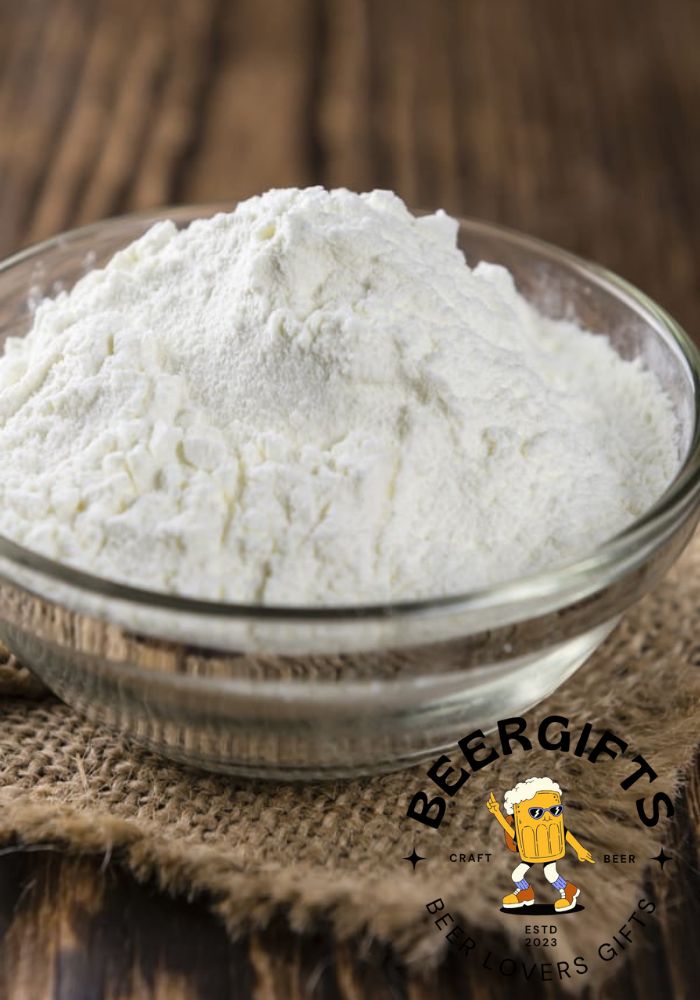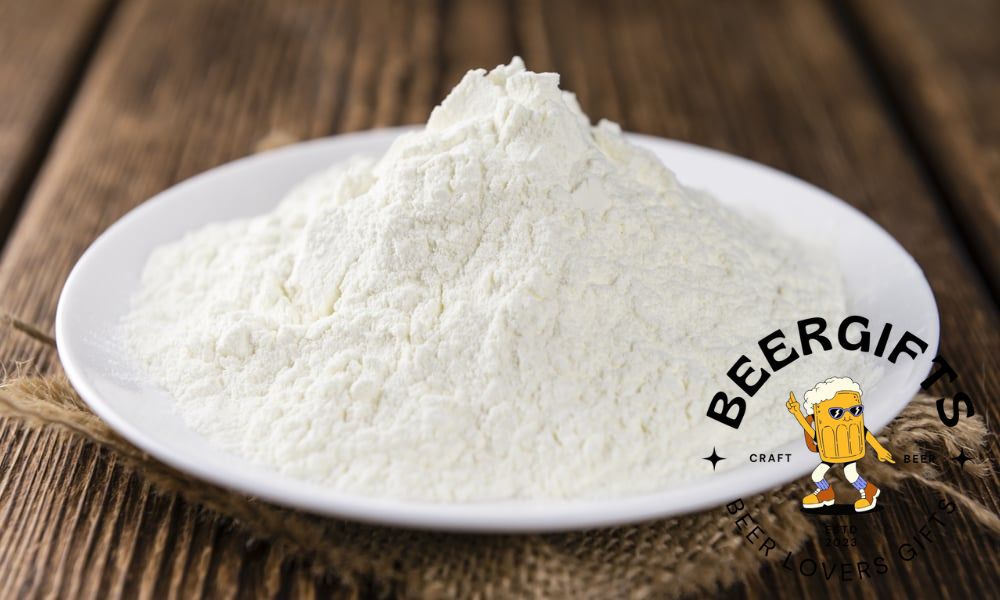Are you looking to experiment with sweet beer? Beer that sweet seems like a misnomer but the truth is that more and more brewers are experimenting with innovative ingredients such as lactose to come up with distinct beer flavors. In this article, we’ll explain when to add lactose to beer and some tips on how to do it.
What Is Lactose?
The use of lactose in beer brewing is not new. Lactose is a type of natural sugar contained in the milk of all mammals. It is also known as milk sugar and this is where beer styles such as milk stout derived their name. As an ingredient in the beer brewing process, lactose comes as a white powder that resembles milk powder.
Lactose is different from other types of sugar such as the common table sugar found in our kitchen in that it does not ferment. In the context of the beer-making process, the addition of yeast to the wort breaks down and converts sugars to ethanol. On the other hand, when lactose is added at any step of the beer-making process, it doesn’t breakdown and instead remains as a residue in the finished beer. This gives the beer a distinctive sweetness and taste.
Why Add Lactose To Beer?
Lactose plays an important role in the beer-making process. For starters, it sweetens beer, evening out and balancing the bitter hops and other deep flavors associated with traditional beer. Today, more and more brewers are experimenting with lactose to come up with a wide range of complex, dynamic beers with sweet undertones.
The ‘milky’ component of lactose also has the effect of giving stout a smooth, creamy, and full mouthfeel. This explains why some beers are more delicious, hooking you with every sip of the drink. We could say that lactose gives an extraordinary body to an ordinary beer.
A Little History of Mixing Lactose With Beer
You might be wondering where the whole idea of adding milk to beer came from. Here is a little interesting history:
It is not known who came up with the idea but the practice of adding whole milk to beer is an English practice that dates as far back as the 1800s. The resulting beverage, known as milk beer, was promoted as a superfood that would provide manual laborers with the strength they needed to get through the day.
Eventually, brewers began adding milk during the beer-making process and hyped up the resulting milk stout as an energy-packed beverage whose nutrients were equivalent to that of pure dairy milk.
So exaggerated was the strength of the milk beer that by the 20th century, doctors were even recommending milk beer as medicine for treating various diseases. Nursing mothers were also encouraged to sip on milk stouts to boost their milk supply. All these claims were obviously unproven and eventually, the British government prohibited the use of the words ‘milk stout’ to curb the wave of false and misleading advertising.
Amid all the hullabaloo of the milk stout, brewers figured out that, they didn’t have to use actual milk in their beer; they learned that they could simply substitute with lactose, also known as milk sugar. So, this is how lactose came to be added to stout beers and today this remains a popular way to give body and bring out the tantalizing taste of stout beer.
At What Point Can You Add Lactose to Beer?
Now that we have learned a little bit about the origins of the practice of adding lactose to beer, let’s take a look at when is the best time to add lactose to beer.
When brewing your own beer, you can add lactose at just about any point of the process and you would achieve the desired result, which is balance and body.
Some common places where lactose is added include:
When boiling the wort
Boiling helps to pasteurize the wort and it is also a good time to add hops and other flavors, including the sweet lactose. The downside to adding lactose this early in the beer-making process is that the boiling can easily cause the beer to become too sweet.
Fermentation
At this point in the brewing process, yeast is introduced into wort to break down sugars into alcohol. The advantage of adding lactose here is that you have leeway to adjust the sweetness of your beer to your preference.
In the Keg
Finally, you can add milk sugar into the finished product. You should be careful here because there isn’t much of a chance to adjust the sweetness profile of the beer once the brewing process is complete.
At the same time, putting lactose too early in the process, for example, during the mashing phase is not really a good idea. Remember, at this point, you will have to separate the mashed malt from the wort. This means filtering out the lactose and getting a rather diluted end product, which is counterintuitive to the goal of adding the lactose in the first place.
So, when really is the best time to add lactose to beer? We would say toward the end of the boiling phase. At this point, the lactose molecules will have a few minutes to interact with the wort and the added sweetener will not interfere with the hops that have been added to the beer.
How Much Lactose Is Too Much?
Another question that comes up when it comes to adding lactose to beer is how much of this sweetener you should actually add.
The amount of lactose you add to beer is an important consideration because too much will ruin your beer and too little will not deliver the sweet spot you were looking for in the first place.
There are no hard and fast rules here as it all depends on how sweet you want your stout to come out but we suggest adding 1 or a half-pound of lactose for every 5 gallons. On the other hand, adding one pound of lactose to every 1 or two gallons of beer will make the drink so sweet as to ruin it.
Remember when adding lactose to beer, moderation is everything. It is best to take precaution, put a little, and if you need to, adjust the sweetness of your stout as you go along. We suggest starting with half a pound for every five gallons and then adding more as is necessary.
Tips For Adding Lactose To Beer
As you can already tell, adding lactose to beer is an art in itself—you do not want to put too little or too much as this will affect the quality of the end product. Here are a few tips for successfully adding lactose to beer:
- Consider adding the lactose toward the end of the boiling process
- Try to avoid interfering with the hops that have been added to the wort as this could greatly compromise the quality of the beer
- Taste the beer as you add lactose throughout the entire process. Do not just throw in 1 entire pound of milk sugar to 5 gallons as per our suggestion. It is best to taste as you go along until you get to your desired taste.
- Try not to add lactose too early in the brewing process as this can affect the process of breaking down the hops.
Alternatives To Using Lactose As A Sweetener
Don’t get us wrong, lactose is a game-changer in the beer-making process. But, the truth is, many of us are intolerant to lactose so adding this sweetener to beer is not an option. The good news is that there are alternatives to make your beer sweet or to at least come up with a well-rounded stout. Here are some ideas:
- Mash the malt at a higher temperature
- Use lower attenuative yeast types
- Use or increase the use of the amount of non-fermentable malts to give your beer a distinct taste
- Increase the ratio of gravity to alcohol bitterness to avoid ending up with an unbearably tangy beer
Summary
Lactose does a great job of adding flavor and body to your beer. Like other ingredients of beer brewing, adding lactose to beer is not something you should expect to get right the first time you do it.
But, with practice, you will eventually get the hang of it. The key thing to keep in mind is that moderation does go a long way and that you are better off adding little by little and experimenting with different stages of the brewing process to see how your beverage comes out in the end.
Do you have any questions or comments on homebrewing and in particular adding lactose to beer? Leave them below—we’d love to hear from you!






